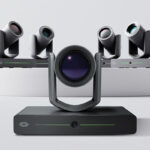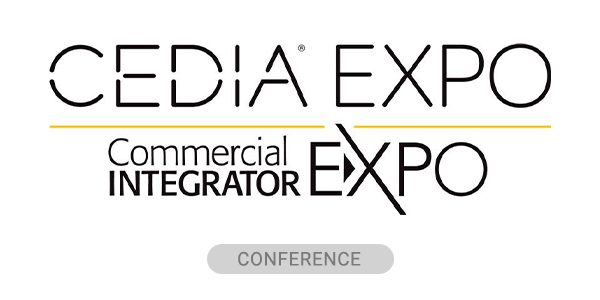Although cellular service might be a luxury for some, it’s actually a necessity for countless individuals and businesses. That means many of us are left dependent on signal strength just to complete day-to-day tasks. And even as cellular connectivity has become increasingly indispensable for daily duties, it can often be unreliable. Indeed, spotty or irregular cellular service remains a persistent frustration for many individuals in the U.S., despite cell phone companies offering cutting-edge 4G and 5G technology in most data plans. This is particularly true in remote spaces or densely populated urban areas.
Anyone forced to step outside in the snow to take a call, or who cannot connect to a hotspot during a Wi-Fi outage, knows that poor cellular connectivity is a nuisance. It makes people question why connectivity is unavailable despite high-end plans that promise lightning-fast data. Environmental factors, as it turns out, play an outsized role in these connectivity challenges.
Physical Obstructions
According to Robert Galeano, owner of Cellular Outlet, physical obstructions such as concrete structures, trees and buildings, coupled with distance from cellular towers, often result in dropped calls and sluggish data speeds. However, another culprit — building materials — also plays a role. It’s often difficult to transmit and/or receive through multiple layers of metal and concrete, which can exacerbate any existing connectivity issues and create data dead zones within residential and commercial buildings.
Thankfully, the dream of eliminating dead zones can become a reality with cellular signal boosters. Specifically, the external factors that often block cellular connectivity can be fixed by centralizing and boosting connectivity to desired locations.
A recognized leader in the field is Wilson Electronics, the parent company of weBoost and WilsonPro. The company’s leadership is reflected in its multiple-consecutive-year leadership position in the CE Pro 100 Brand Analysis in the Cell-Phone Signal Boosters category. It has developed an innovative solution: the weBoost Office 200, which is a series of signal boosters meant to simplify and improve user experiences in environments plagued by interference-causers.
Cellular Outlet is a certified retailer and installer for Wilson Electronics, and Galeano has installed weBoost products throughout southern California since 2004. Over that 20-year period, Galeano has witnessed continued growth in booster demand. In an interview with Commercial Integrator, he attests that most referrals come either from positive word of mouth or from Wilson Electronics directly.
The weBoost Office 200 mitigates poor cellular connectivity in communal and residential spaces, adapting to the challenges that physical obstructions and building materials pose. It connects to cell phone towers through a rooftop antenna, thus amplifying signals. These antennas, similar to those found on vehicles, offer an unobstructed path for cellular connection, which the system then disperses to all areas within a building — including basements and garages.
‘The Booster Will Always Provide Maximum Connectivity’
Galeano reflects on the fact that, since he started installing them back in 2004, cellular signal boosters have advanced considerably. “The booster will always provide maximum connectivity” these days, he says. “If the tower is close by, and the booster senses too much signal, then the booster can lower its gain.” Formerly, something like that had to be manually adjusted. “During rush hour, when the towers are busy, the Office 200 works at its max,” Galeano adds. “It is always adjusting, making the technology last longer.”
Cellular Outlet has successfully installed weBoost Office 200 boosters in diverse settings, ranging from residential homes to critical city infrastructure. Regardless of the setting, the benefit remains the same: This signal amplification mitigates the inconvenience of dropped calls and slow data, enhancing productivity by ensuring uninterrupted connectivity for work calls and online tasks.
When integrators design a space, accessibility, convenience, functionality and aesthetics are at the forefront of their mind. The solution’s discreet design ensures minimal aesthetic impact, making the weBoost Office 200 suitable for both new constructions and existing buildings. Galeano also emphasizes that it works with all major carriers. That means, when Cellular Outlet is installing a booster for a client, Galeano can simply ask the owner what carrier they have and then focus the signal on the nearest tower.
weBoost Office 200 in Every Imaginable Situation
Cell signal boosters are an elegant solution to a global issue. Galeano has installed weBoost boosters in every imaginable situation. One opportunity he mentions is for commercial integrators to install boosters in electric vehicle (EV) charging stations. According to WilsonPro, EV chargers rely on cellular data to schedule charging, take payments and track data. However, EV chargers struggle with connectivity due to the layers of metal, drywall and concrete that surround the structures where chargers are located. This can be made worse when the charging station is underground, especially when sewage infrastructure and roads lie on top of the station. Galeano attests that a weBoost Office 200 booster could provide high-efficiency cellular data in otherwise-dead spaces like these.
Galeano also discusses cell signal booster applications for school district offices, whose radio frequencies rely on cellular service. He points to the Capistrano Unified School District dispatch office as just one example. “It was one office where they had a lot of radios that they were using to communicate with buses,” he explains. “However, the cell service was poor, so the district office could not communicate with the drivers.” Once he installed the weBoost Office 200, however, the signal was perfect, ensuring that those vital communications with drivers are successful. The same principle applies to fire departments — another public service whose mission is essential and depends on reliable communication — because fire trucks connect with the station via radios.
It’s not just critical driver/home base communications, however, but also potentially life safety communications that depend on cell signal boosters. As Galeano explains, his company “…[has] installed boosters in the main offices of schools. So, if there is any emergency, they can call out.” Indeed, the boosters can be expanded to fit the entire campus, thus making each classroom a hub of cellular connectivity.
weBoost Office 200: Sleek, Simple Installation
Galeano, as a longtime installation partner of Wilson, speaks from experience when he says that the installation process for the weBoost Office 200 is not just sleek but also simple. Indeed, the company has installed countless units over the years, contributing significantly to business upside throughout this time. The installation process involves a certified installer like Cellular Outlet mounting an antenna on the roof, along with a booster and an inside antenna inside the home. The outside antenna captures and retransmits signals to a booster inside the building. The signal booster amplifies the signals from the outside antenna, and the inside antenna will broadcast the signals throughout the building. With this straightforward process, your clients can feel confident that their cellular connectivity will be enhanced.
Together, Wilson Electronics and Cellular Outlet are leveraging the weBoost Office 200 to blast into the future of cellular service. There’s just one downside: When you have the weBoost Office 200 on premises, you can’t blame a lack of signal for not getting stuff done!










